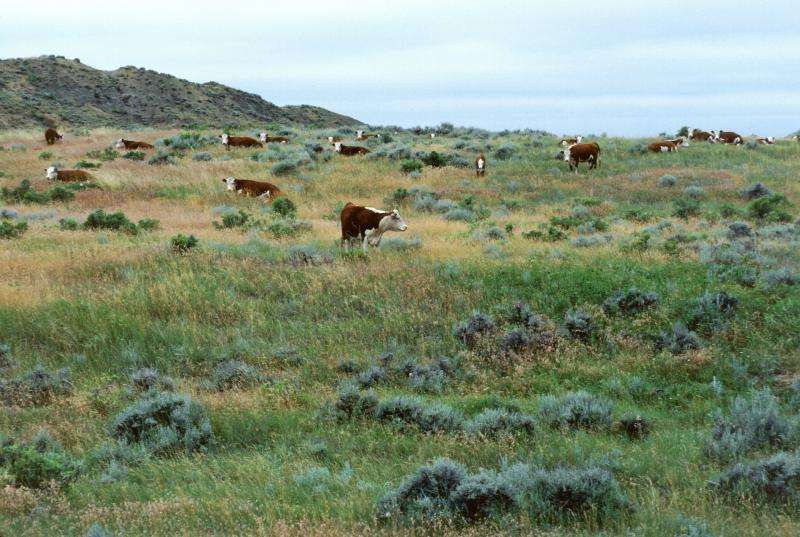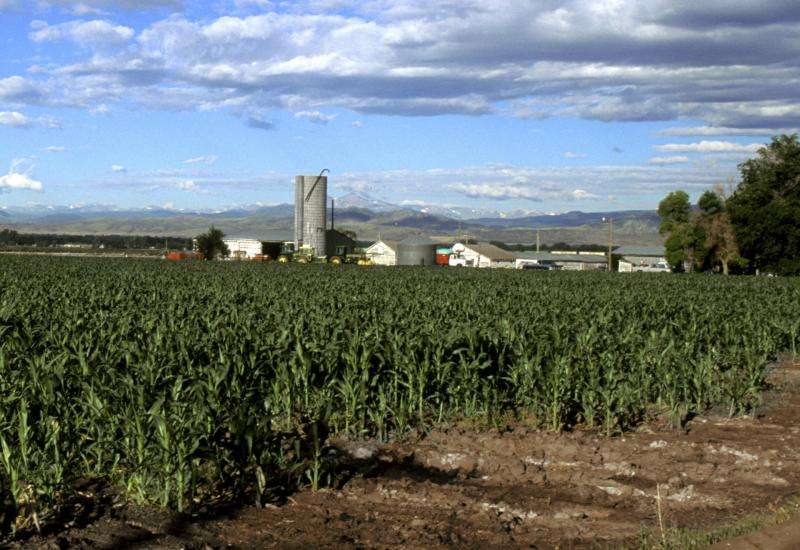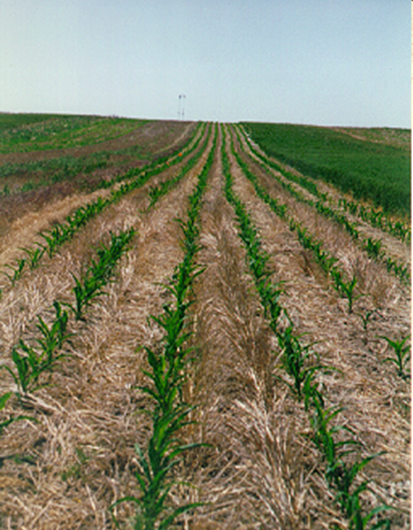Great Plains agricultural greenhouse gas emissions could be eliminated

Researchers from the Natural Resource Ecology Lab at Colorado State University and their partners have completed a historical analysis of greenhouse gas emissions from the U.S. Great Plains that demonstrates the potential to completely eliminate agricultural greenhouse gas emissions from the region.
The article, appearing in the Proceedings of the National Academy of Sciences, used historical agricultural census data and ecosystem models to estimate the magnitude of annual greenhouse gas emissions from all agricultural sources (e.g., cropping, livestock raising, irrigation, fertilizer production, and tractor use) in the Great Plains from 1870 to 2000.
"Carbon released during the plow-out of native grasslands was the largest source of greenhouse gas emissions before 1930," explained the study's lead author, William Parton, senior research scientist with CSU's NREL. "Livestock production, direct energy use for tractors and irrigation, and soil nitrous oxide emissions from nitrogen fertilizer application are currently the largest sources."
The analysis demonstrated that adoption of best management practices (no-tillage agriculture and slow release fertilizer, for example) could substantially mitigate agricultural greenhouse gas fluxes.
"If just 25 percent of agricultural producers in the region adopted these practices, we estimate a 34 percent reduction in greenhouse gas emissions," said Parton. "If 75 percent of them adopted the practices greenhouse gas emissions from agriculture in the region could be completely eliminated."
These reductions in greenhouse gas fluxes would occur without any reduction in food production and are primarily a result of no-tillage cultivation practices.

"This is an important research milestone about the ways that population change shapes the environment," said Myron Gutmann, director of the Institute of Behavioral Science and professor of history at CU-Boulder, who was principal investigator on the project. "In this case, through the expansion of agriculture on the Great Plains and the need for different kinds of foods."
Gutmann said that, as farmers replaced human and animal labor with mechanized equipment and expanded herds of cattle to meet consumer demand for meat, emissions from these sources overwhelmed the otherwise beneficial effects of other agricultural changes, such as increased irrigation and a reduction in the extent of land in crop production.
"Fortunately, new farming strategies have the potential to reduce those greenhouse gas emissions and diminish agriculture's impact on the environment in the future," Gutmann said.

Using historical data, the team showed that climatic factors mediate these emissions, with cool and wet weather promoting carbon sequestration, and hot and dry weather increasing greenhouse gas releases. Potential future increases in hot and dry weather conditions could greatly enhance greenhouse gas fluxes from the Great Plains. A 25 percent reduction in harvested cropland and increases in the conservation reserve program have resulted in major reductions in greenhouse gas emissions from the Great Plains during the last 40 years. Potential expansion of cropland in the Great Plains due to high crop prices could greatly increase future greenhouse gas fluxes.
There are cultural and economic barriers to the extensive adoption of such best management practices, including higher costs for slow release fertilizer, new equipment, and training required for conversion to no tillage agriculture.
"The U.S. Department of Agriculture's 'Climate Smart Building Blocks for Agriculture and Forestry' are addressing these barriers by showing how policies, economic incentives, and partnerships can be leveraged to reduce greenhouse gas emissions," said Bill Hohenstein, director of the USDA's Climate Change Program Office. "This research is key to helping us understand the best approach for reducing these emissions while maintaining the food supply and enhancing rural economies."
More information: "Measuring and mitigating agricultural greenhouse gas production in the US Great Plains, 1870–2000." PNAS 2015 ; published ahead of print August 3, 2015, DOI: 10.1073/pnas.1416499112
Journal information: Proceedings of the National Academy of Sciences
Provided by Colorado State University















